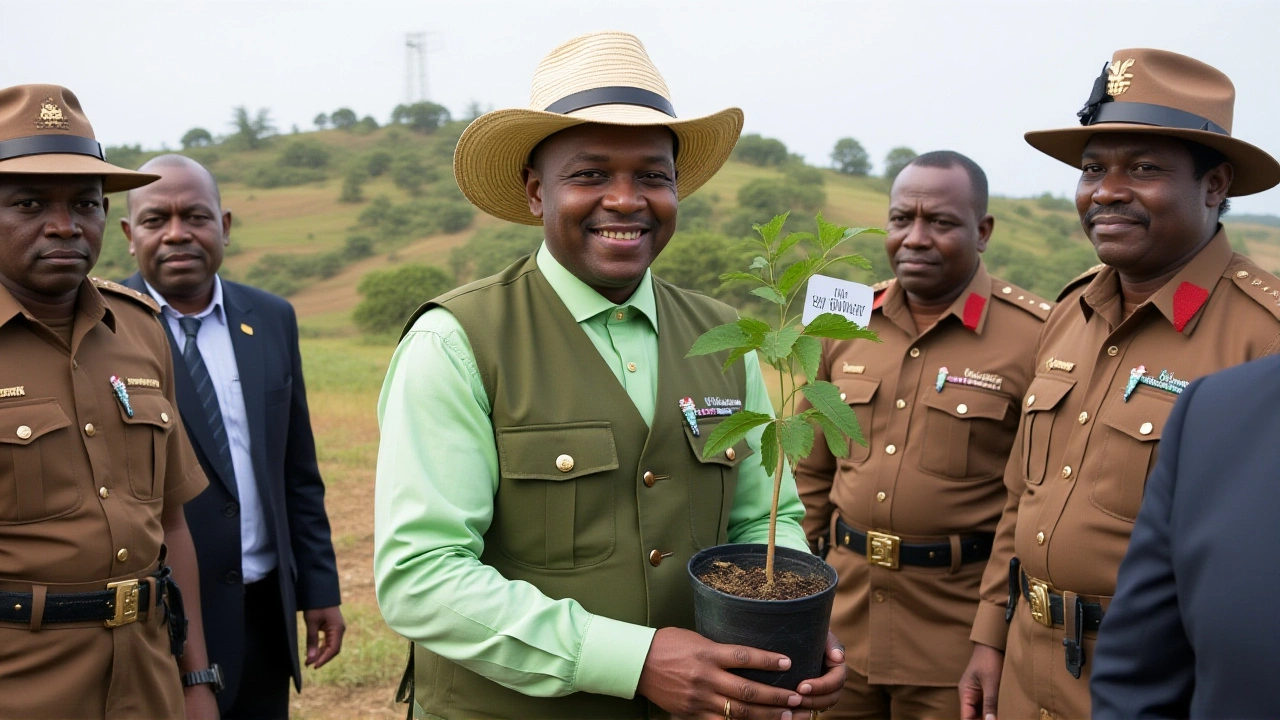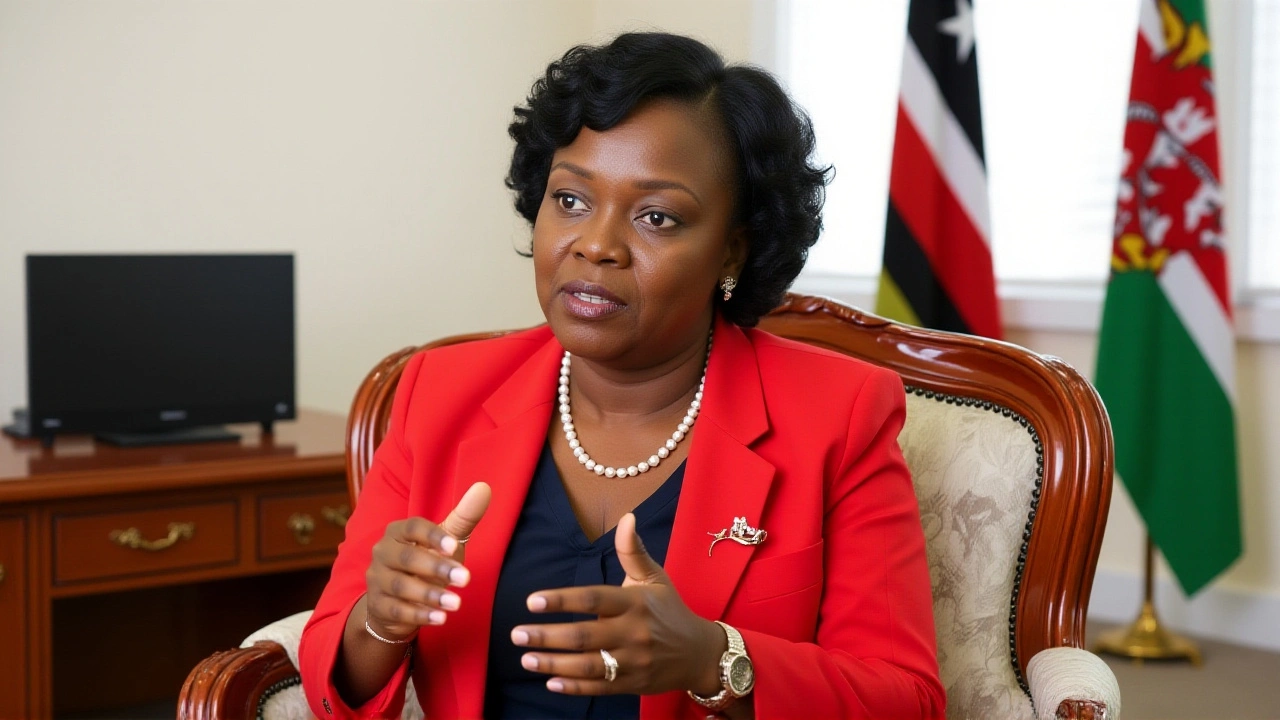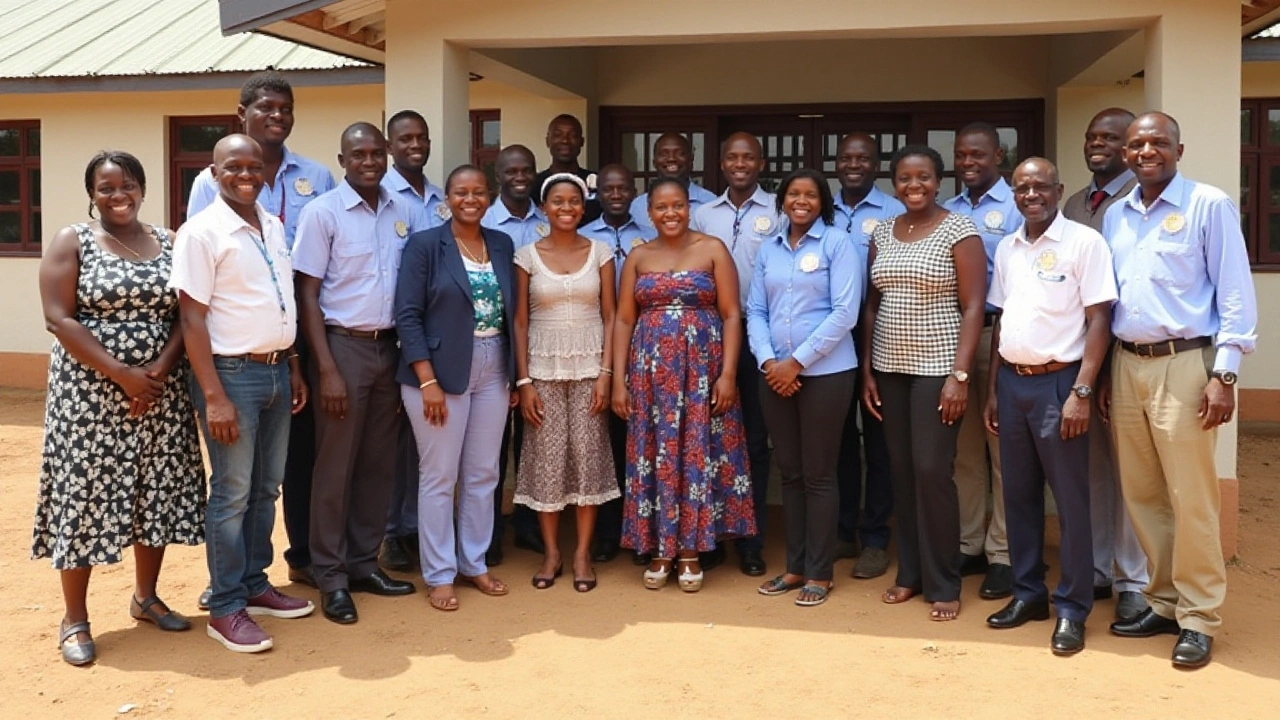When Dr. Deborah Barasa, Cabinet Secretary for the Ministry of Environment, Climate Change and Forestry announced Mazingira Day on Friday, October 10, 2025, Kenya geared up for a massive school‑based tree‑planting drive.
The Ministry of Environment, Climate Change and Forestry, led by Barasa, called on every Kenyan to return to their former primary school and plant fruit trees as part of the nation’s "15 billion trees by 2032" ambition. The goal for the day: 100 million seedlings across 28 000 schools, a push that could lift the country’s tree‑cover from roughly 13 % today toward the constitutional 30 % target enshrined in Article 69 of the 2010 Constitution.
Background: Kenya’s Tree‑Cover Goal
Kenya’s Nationally Determined Contributions under the Paris Agreement call for a 32 % cut in greenhouse‑gas emissions by 2030, with deforestation responsible for about 22 % of the nation’s carbon output. The 2022 launch of the National Tree‑Planting Campaign set a clear target: 15 billion trees by 2032, of which 5 billion must be fruit‑bearing species to address both climate and nutrition challenges.
Since December 2022, the government reports 1.06 billion trees have already taken root, a figure verified by the Kenya Forest Service (Kenya Forest Service) in its annual audit. Yet survival rates have hovered around 60 % because many earlier plantings favored fast‑growing non‑native species.
The October 10 Nationwide Planting Event
On the morning of Mazingira Day, learners from every public and private primary school were instructed to assemble from 8:00 a.m. to 12:00 p.m. East African Time. The directive came from Julius Bitok, Principal Secretary for the Ministry of Education, who issued an official circular on October 9, 2025 to county education officers.
Each school was asked to host at least 100 seedlings, sourced from 1 800 community nurseries funded with KSh 2.3 billion (≈ USD 17.5 million) in the 2024‑2025 budget. The seedlings, ranging from mango and guava to indigenous citrus, were pre‑registered on the National Tree Growing and Restoration Platform, a digital tracking system that assigns a unique QR code to every tree.
During the four‑hour window, teachers, parent‑teacher association members, and volunteers supervised planting, while no formal lessons were allowed – a break from the usual school schedule designed to keep the focus on conservation.
Government Directives and Roles
Forestry Principal Secretary Gonga Mambi emphasized the nutritional angle, noting that "fruit trees will also go a long way in improving Kenya's nutritional status." He urged citizens to tend the seedlings beyond the holiday, warning that "Friday is just the starting point; we need to continue through the rains season to maximise survival."
The National Environment Management Authority (NEMA) will mobilise community‑based conservation committees to monitor survival rates, aiming for an 80 % threshold. Field officers from the Kenya Forest Service – a force of roughly 1 200 staff – will conduct spot checks and collect geo‑tagged photos every 30 days for the first year.
Technical assistance comes from the Kenya Agricultural and Livestock Research Organization (KALRO), which supplied species‑specific planting guides and soil‑preparation kits.

Health, Nutrition and Green‑Job Impacts
The shift toward fruit trees is meant to tackle two pressing issues: climate mitigation and food security. With an estimated 55 million Kenyans still facing micronutrient deficiencies, the Ministry of Environment projects that each mature fruit tree could provide up to 120 kg of fresh produce per year, translating into roughly 22 kilocalories per person per day in a densely populated community.
Beyond the health angle, the Agroforestry Strategy and the newly‑launched Bamboo Development Strategy are expected to generate 500 000 green jobs annually, ranging from nursery staff to value‑addition entrepreneurs processing fruit into jams, juices, and essential oils.
Monitoring, Funding and Future Phases
All planted trees must be logged in the National Tree Growing and Restoration Platform; failure to submit evidence after the 30‑day window triggers a re‑planting order from county environment officers. Quarterly progress reports are slated for the National Treasury, ensuring budgetary alignment with the 2025‑2026 long‑rains planting window that targets an additional 1.2 billion trees.
International partners such as the Food and Agriculture Organization and the World Bank are providing technical expertise, though the entire financial outlay remains domestically funded, supplemented by corporate social‑responsibility contributions from roughly 300 private companies.

What Experts Say
Dr. Samuel Njoroge, a climate‑policy analyst at the University of Nairobi, called the Mazingira Day initiative "an astute blend of symbolic nation‑building and pragmatic climate action." He warned, however, that "success hinges on post‑planting care; without sustained community engagement, seedling mortality could erode hard‑won gains."
Meanwhile, nutritionist Dr. Grace Wanjiku highlighted that "fruit‑tree agroforestry not only sequesters carbon but also diversifies diets, especially in rural counties where malnutrition rates remain above 30 %."
Key Facts
- Event: Mazingira Day tree‑planting on 10 Oct 2025
- Target: 100 million fruit‑tree seedlings across 28 000 primary schools
- Budget: KSh 2.3 billion for seedling production (2024‑2025)
- Survival goal: 80 % monitored by Kenya Forest Service
- Long‑term aim: 15 billion trees by 2032, 30 % cover
Frequently Asked Questions
How does the tree‑planting drive affect rural families?
Rural households stand to gain fresh fruit for home consumption and sale, potentially adding up to KSh 5 000 per season per tree. The extra nutrition can help combat micronutrient deficiencies, while the emerging fruit market creates modest income streams for women’s groups and youth cooperatives.
What measures ensure seedlings survive the first year?
Each school must submit geo‑tagged photos of all planted seedlings every 30 days. County environment officers review the images and, if survival dips below 80 %, they dispatch additional watering kits and organise community watering days.
Who finances the seedling production?
The 2024‑2025 national budget allocates KSh 2.3 billion for nursery operations, while private‑sector partners contribute seedlings and equipment through CSR programs. No direct foreign funding is involved, though agencies like the FAO provide technical guidance.
What is the link between this initiative and Kenya’s climate commitments?
Planting 15 billion trees by 2032 is central to Kenya’s NDC under the Paris Agreement, aiming to sequester roughly 30 million tonnes of CO₂ annually. The 100 million fruit‑tree push on Mazingira Day represents a critical milestone toward that target.
Will there be follow‑up events after October 10?
Yes. The Ministry of Environment has scheduled additional planting windows during the long‑rains season (October‑December 2025) and again in the short‑rains season of March‑May 2026, each accompanied by monitoring reports to the Treasury.










18 Comments
The scale of that tree‑planting effort is massive. 🌱
Planting 100 million fruit seedlings across schools ties directly into Kenya’s 15 billion‑tree target, a cornerstone of its Nationally Determined Contribution. The Ministry’s integration of QR‑coded tracking introduces a data‑driven feedback loop for post‑planting care. By leveraging community nurseries, the initiative reduces supply‑chain latency and embeds local economies. The emphasis on fruit‑bearing species also addresses micronutrient deficiencies, aligning climate mitigation with nutrition security. Coordinated scheduling during the long‑rains window maximizes sapling establishment. Ultimately, the policy blend reflects a systems‑thinking approach to sustainable development.
The latest NEMA audit shows that when local water‑catchment committees log geo‑tagged photos, survival jumps to around 78 percent. This data point underscores the importance of continuous monitoring beyond the planting day. Moreover, KALRO’s soil‑prep kits enhance root penetration in degraded substrates. By standardizing these practices, the program can edge closer to its 80 percent survival benchmark.
Seeing kids get hands dirty while planting trees feels like a hopeful glimpse of future stewardship. It reminds us that environmental action starts at the classroom level.
The mobilization involves billions of seedlings and schools across the country, creating a massive step forward for climate action and local economies. 🌍
Indeed, the ripple effect of each sapling can spark entrepreneurship, from jam production to eco‑tourism, fueling grassroots innovation. 🌟
The initiative showcases Kenya’s capacity to execute large‑scale environmental projects without external dependence. This reinforces national sovereignty over natural resource management.
However, without robust post‑planting governance, the symbolic gesture risks becoming mere propaganda, masking systemic land‑use conflicts that persist beneath the canopy. The narrative must confront these structural issues.
Community involvement in watering schedules can bridge urban‑rural divides, fostering shared responsibility for the landscape.
Kenya’s integration of fruit trees into its national afforestation agenda represents a strategic convergence of climate mitigation, food security, and economic diversification. By prioritizing mango, guava, and indigenous citrus, the program aligns with agroforestry principles that enhance biodiversity while providing marketable produce. The allocation of KSh 2.3 billion to community nurseries signals a commitment to building local capacity and reducing reliance on imported seedlings. Each QR‑coded sapling creates a digital footprint that enables real‑time monitoring, a capability that was absent in earlier campaigns dominated by fast‑growing exotics. The 80 percent survival target, overseen by the Kenya Forest Service, introduces accountability mechanisms that can be benchmarked against global best practices. Moreover, the projected yield of 120 kg of fruit per mature tree translates into measurable nutritional gains for households, addressing micronutrient gaps prevalent in many regions. The ancillary green‑job creation, projected at half a million positions, offers a pathway for youth employment and entrepreneurship in processing and value‑addition sectors. Partnerships with KALRO provide scientific guidance on soil preparation and species selection, enhancing the ecological suitability of plantations. International technical assistance from the FAO and World Bank supplements domestic expertise without compromising financial sovereignty. The phased planting windows during long‑rain and short‑rain seasons are calibrated to maximize water availability, reducing early‑stage mortality. Data from the National Tree Growing and Restoration Platform will feed into national climate reporting, strengthening Kenya’s transparency under the Paris Agreement. Community‑based monitoring committees empower local stakeholders, fostering a sense of ownership that is critical for long‑term stewardship. The model also offers a replicable template for other African nations seeking to intertwine reforestation with livelihood improvements. While challenges remain-such as ensuring equitable access to seedlings and preventing land‑grab concerns-the comprehensive design of Mazingira Day positions Kenya to make substantive progress toward its 30 percent canopy goal. Continuous investment in post‑planting care, capacity building, and market linkages will be essential to translate saplings into thriving, productive ecosystems. In sum, the initiative illustrates how policy, science, and community engagement can synergize to address climate, health, and economic objectives simultaneously.
While the outline is ambitious, the success hinges on transparent funding trails and measurable outcomes, lest the project falter under bureaucratic inertia.
The sheer magnitude of planting millions of trees in a single day evokes a cinematic vision of hope, yet the raw reality of sapling survival remains a stark, unforgiving test.
One must remember that dramatic gestures lose their potency without sustained grassroots commitment, otherwise they become fleeting spectacles.
Some observers argue that the timing of the planting aligns with upcoming international climate finance negotiations, suggesting a strategic positioning to secure favorable terms.
Regardless of external incentives, the primary objective should remain the ecological and nutritional benefits for Kenyan communities, ensuring that policy decisions are grounded in scientific evidence.
It is imperative that such large‑scale initiatives are subjected to rigorous peer review to validate their methodological soundness.
Agreed the academic scrutiny will bolster credibility and attract further investment from both public and private sectors.
National pride must drive the continuation of this program, ensuring that Kenya remains a leader in sustainable development without external dependencies.